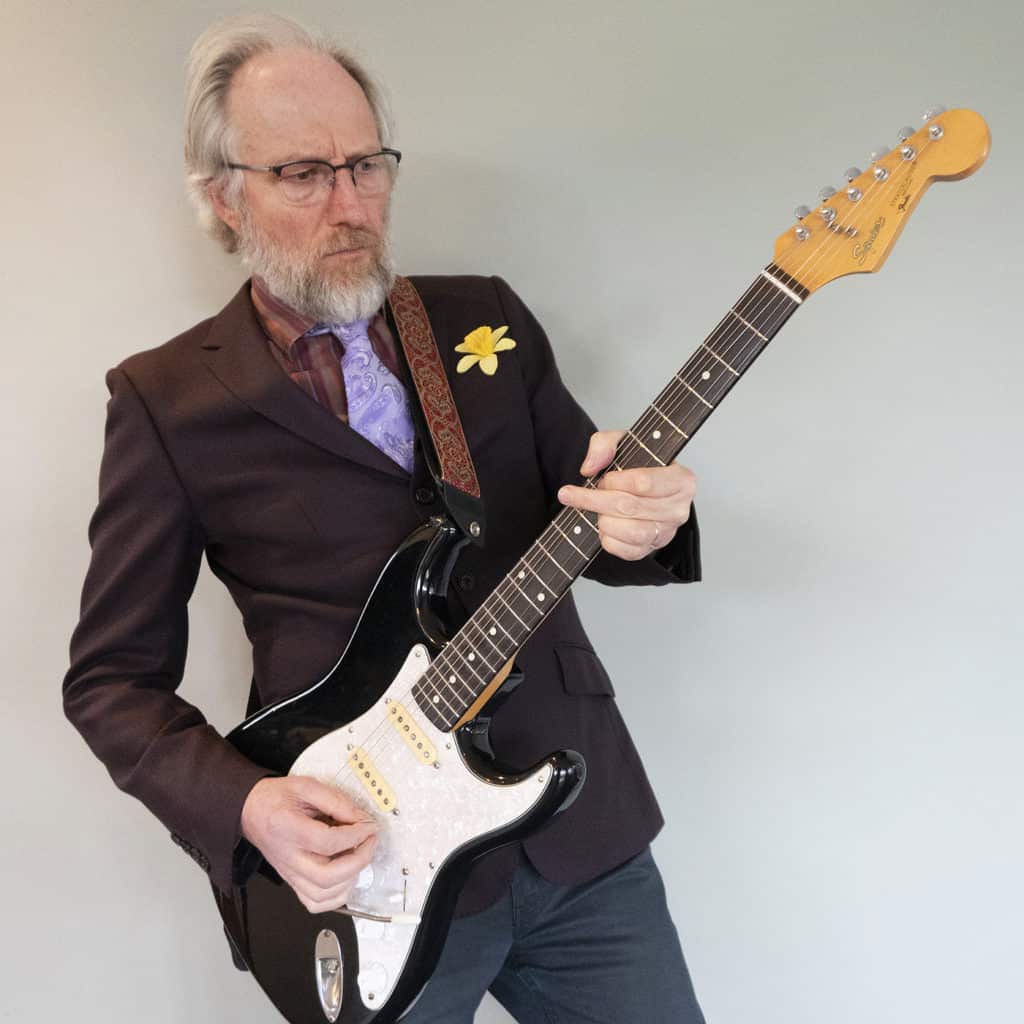Alec Bathgate, the quiet guy who made all that guitar noise with The Enemy, Toy Love and Tall Dwarfs, has released his third solo album, Phantom Dots. He talked to Richard Langston about belatedly taking guitar lessons, playing a session at Sun Studios, posting his archive of photos on Instagram, and why he started making music again.
Alec, I have a memory of you saying when Chris Knox had his stroke in 2009 that you might not make any more music…
I did feel like that, Chris having a stroke was a massive shock, and it did knock me back for a long time. It’s only now ten years later that I can look back and see how affecting that was. I felt like I didn’t want to play music if I couldn’t play with Chris. But he kept playing music (laughs) despite his disability, and if I’d said to him I wasn’t going to play any more I think that would’ve pissed him off.
We also had the earthquakes in Canterbury a year after, and Georgina and I lost our house, we had to go through a rebuild. It was a difficult few years and I didn’t feel like playing music much. But then I felt quite sad and it frightened me to think that it was gone. Three or four years ago I really felt like I wanted to make music again.

Phantom Dots is all instrumentals…was that the plan when you set out to make it?
I had this thing of playing the guitar again and I had guitar lessons.
Eh?!
Yeah (laughs), people are often surprised. I thought it would be an interesting thing to do because I always felt like I was faking it a bit, I hadn’t learnt properly and I just thought it would be interesting, and I found a really great guitar teacher, Ben Eldridge who’d been in the Reduction Agents with James Milne (Lawrence Arabia). I was shocked to discover some fundamental things that you need to know as a musician (laughs). I immersed myself in guitar playing, got a bit obsessed, getting up at 6 am to play for an hour before I went to work. I’m still on this roll and I’m really glad it’s come back. This is what I’m going to do for the rest of my life now, play. I’m also in a band called The Sundae Painters which just came out of the blue. I’m really enjoying that.
How did that band come about?
Hamish Kilgour is living in CHCH at the moment, and Paul Kean (Toy Love, The Bats) mentioned he’d been doing some recording with Hamish and I said I’d be happy to help out. Kaye Woodward (The Bats, Minisnap) is also in the band and we’ve put two songs on Bandcamp – Paul’s also made a couple of videos that are on YouTube – and suddenly we’re playing a gig. Not sure where it will go but I like how we sound, it’s a good sound, it’s quite a heavy psychedelic type of thing.
I want to make another solo album of songs which will take a long time. I think with Phantom Dots I wanted the challenge of making it all instrumentals. I’d been listening to a lot of instrumental music, I wanted every track to be different, quite short, jumping through all these different things. I wanted it to be engaging and not something that people would just play once.
I listen to a lot of instrumental music when I’m working (he has his own design company) such as Fripp and Eno ‘No Pussyfooting’ which I found in a bargain bin way back in Dunedin when I was 16. I like Ravi Shankar, someone I also discovered early on. The first album I bought was the ‘Concert for Bangladesh’ box set and there’s a whole side of Ravi Shankar and I think that was an influence on my guitar playing especially with the drone thing.
Your Instagram posts – all those personal and band photos you’ve put out there …it’s like a potted history of your life …
I’ve kept stuff from when I first started playing music in The Enemy and in Toy Love. I kept all our posters, any articles, a list of all our gigs. I don’t know why, I think I’m just an obsessive list-maker and collector. I’ve got boxes of this stuff in my attic.
I‘d been recording Phantom Dots and decided to put that up on Bandcamp and realised that no-one would have a clue that it even existed. I thought maybe I’ll put some stuff up on Instagram and that might draw a bit of attention. It’s a bit weird because there’s stuff going right back to childhood so it’s like seeing my life flash before my eyes (laughs).
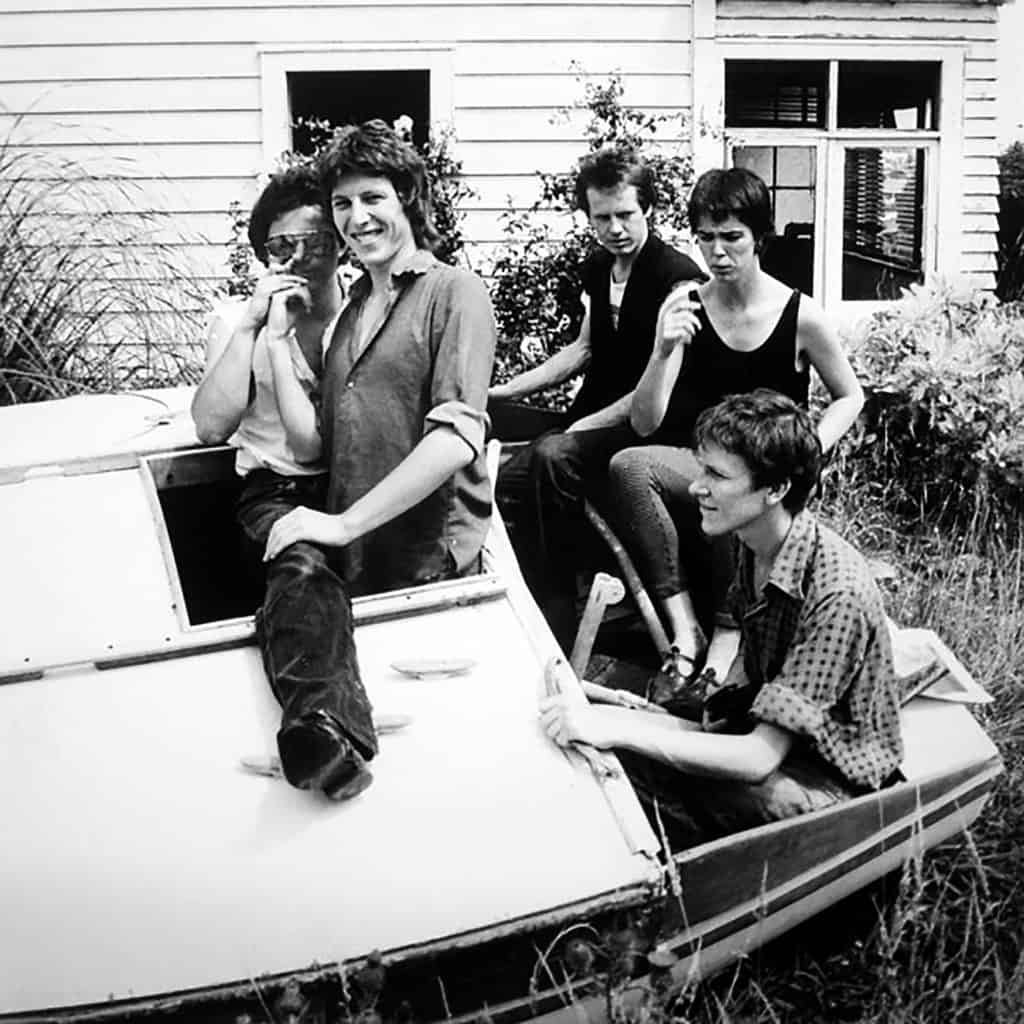
There’s some great photos that you’ve taken… one of Hamish Kilgour with a guitar in Christchurch in 1983 and a memorable shot of The Chills…
Yeah, I like that one with the leather jacket. I got into photography in the early ‘80s at the same time as Flying Nun was emerging so I photographed a lot of the bands.
There’s a few photos of you growing up in Tapanui in rural Otago in the 1960s…one imagines that could’ve been a fairly ideal childhood…
My parents had a farm. I had three older sisters and we caught the school bus so we had a typical farming childhood. One of the things growing up on a farm you get put to work (laughs). A lot of childhood was working in the woolshed, bailing hay, harvesting wheat. In winter you’d be pulling sheep from snowdrifts. It was a good childhood but I didn’t have any desire to be a farmer and there was a lot of pressure cos I was the only son. But I wasn’t cut out for that.
As I got older and once I started getting interested in music we would go to town – Gore was quite close – I would do the rounds of record shops, even before I could afford to buy anything. I used to listen to the radio, on Thursday nights Peter Sinclair would to do a Top 20 countdown. The Monkees on TV was a really big thing when I was about 7 or 8, that created an impression of being in a band, have a Monkee mobile, and all living together, that looked like great fun. Later I started reading about music and discovered the NME and Melody Maker.
When did your Beatles thing start?
That was much later. The first thing that really connected was heavy metal (laughs) hearing Black Sabbath or Hendrix. My sister bought a couple of Hendrix albums and I listened to those a lot. Heavy metal was big down south in Gore, there’d be bogans driving around in V8s with Deep Purple and Black Sabbath blasting. I loved those big distorted riffs.
Glam rock was the first thing I connected with in a big way, I was just at the right age 14 or 15, things like Slade, Alice Cooper, Mott the Hoople, T-Rex, David Bowie. That was around the time I started to play as well.
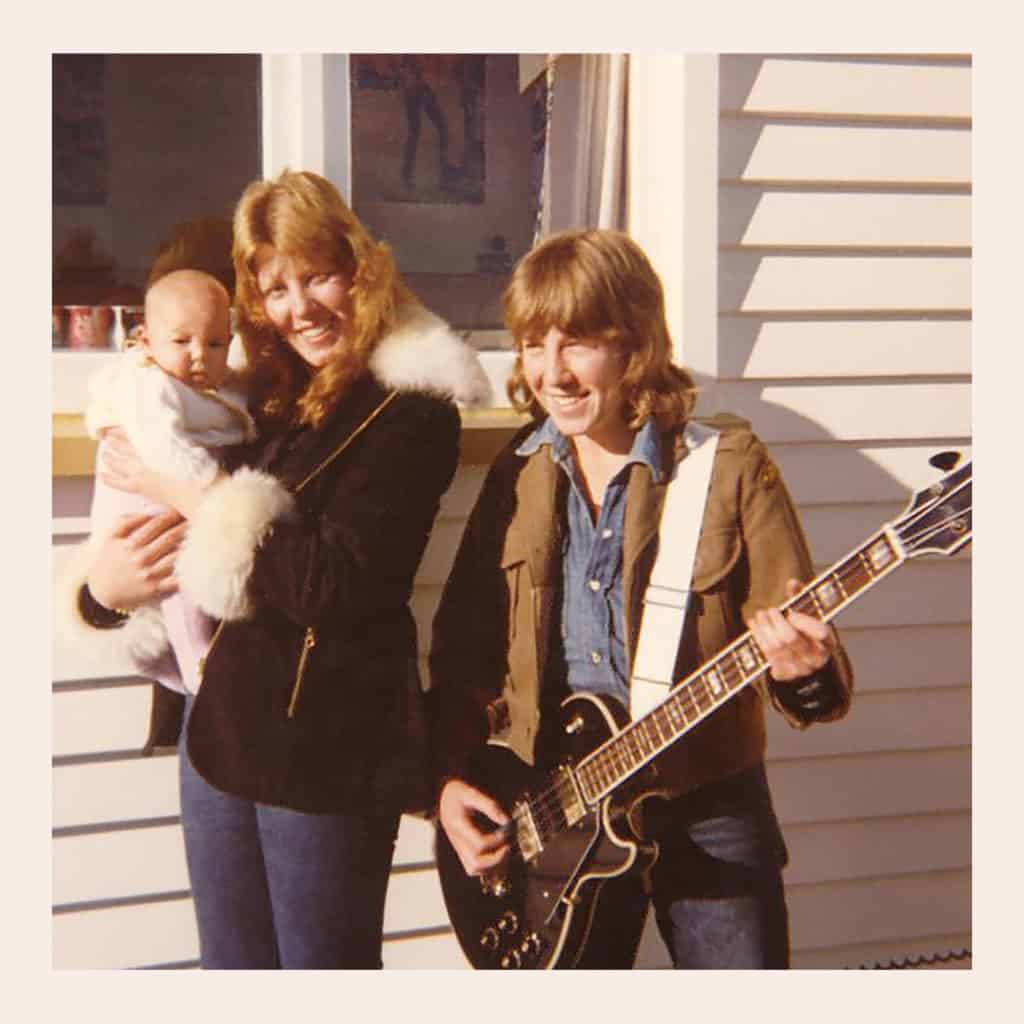
There’s a picture of you in 1974 with a bass, was that your first instrument?
Yes. I played with a friend Jeff Rae who went on to be a country musician. We were school friends and he’d been playing guitar since he was really young and he was much better than me. I took up the bass and it was my instrument for quite a long time but I realised I wanted to play guitar. I wasn’t very skilled at it but fortunately for me that coincided with punk rock which was very forgiving (laughs). It was all about attitude and sound rather than technique.
The Enemy had plenty of both. Chris has called the band’s version of ‘Pull Down the Shades’ a lost classic….to me it’s the best NZ punk song…simple, direct, powerful.
It was written really early on, in the front room of Chris’s flat, the Fileul St house where we practiced. We might have even done it the first time we played. We went from meeting each other to practising and playing live in a very short time span. ‘Pull Down the Shades’ is three chords and you play them as fast as you can (laughs). It got faster and faster and shorter, I think it originally had 7 or 8 verses.
The way you meet Chris has almost become mythical, the meeting in the record shop In Dunedin when you were looking for the Damned single…
It was the ‘Neat Neat Neat’ single and it was in Jeff Ruston’s record shop in Princess St. Mike Dooley (who’d become The Enemy’s dummer) and I were in the same class at Polytech, and most lunchtimes we’d go to Roy Colbert’s record shop and then to Jeff’s. Chris was behind the counter minding the shop – he’d probably worked the morning as a postie, I’m pretty sure he still had his postie gear on.
Mike and I knew that the Damned single was about to be released, that was the first punk release in NZ. Chris, Mike and I just hit off, he was being typical Chris, very engaging. He was curious about these two young guys – Mike and I had been playing a bit together – and Chris had a band with some friends. Obviously he had a desire to be fronting a band and he’d been writing songs for quite a long time. When we first started playing together he had a book full of stuff he’d written. He played me songs he’d written on the piano.
You’re such different characters, Chris out-there, assertive and confrontational and you’ve always appeared the quiet shy one…
Definitely shy. I might not have played in a band if I hadn’t met Chris, he gave me the confidence to do it and he deflected attention because he was such a great front person. In that sense, polar opposites. Chris always shocked me by being so extroverted, that’s alien to my character.
Here you are this shy farm boy and suddenly you’re in the maelstrom of punk …which could be violent…in photos from the time you look fresh-faced…you weren’t trying to be something you were not…
I didn’t relate to the aggression of punk rock, to me it was just the sound of distorted fast guitars, that was really exciting. To me as an 18 year old it was just so wow and primal. I got around my shyness and fear of being on stage because I was just loving playing in a band, it had been my dream all through my teenage years.
I remember Toy Love at The Cook in Dunedin…just so fierce…what was it like for you?
I loved it. 1979 was a fantastic year. We ascended pretty quickly. When The Enemy went to Auckland we weren’t that well received, the punks were suspicious, they didn’t like these out-of-towners from down south. Chris had a mohawk and we had this aggressive name so no-one wanted to book us. We were kinda stranded in Auckland. When Toy Love started playing a couple of months later suddenly people were coming along and were a lot more accepting and it just kept growing and as we went out into the provinces we got bigger and bigger crowds. It was just thrilling playing.
We had The Enemy songs and Toy Love were writing really good songs. Usually I’d come up with some chords or a riff and Chris had such a great sense of melody he’d sing something over the top and we’d have a new song. Some things would be written out of the band practising but after a while it was just Chris and I. I’d play him something and he’d do all the hard work of coming up with the tune and writing lyrics.
You had similiar taste in music?
When I first met him I was into The Velvet Underground. I had a compilation in high school and I loved that and tried to play like them. Also Ravi Shankar as I mentioned. Chris was a big Beatles fan which I was kinda suspicious of. Chris was a bit older than me and he’d lived through all that.
I see on your Instagram feed you’ve been reading a book on Plastic Ono band and George Harrison …so something changed…
I think in that couple of months between The Enemy and Toy Love Chris had brought some Beatles’ albums to Auckland. Revolver is the big one for me. I love that album and the guitar sounds and they’re playing as a band so you get all those tracks like ‘She Said She Said’ and ‘And Your Bird Can Sing’, ‘Doctor Robert’. It sounds like they’re playing together as a band and the guitars sound amazing. There was also a Beatles’ songbook lying around and I tried to learn songs from it and that fed into Toy Love.
The song ‘Rebel’ came from ‘You’ve Really Got a Hold On Me’, a Smokey Robinson song The Beatles covered. The chords in that song are lifted directly from that. Compared to Enemy stuff that’s quite a complex song, there’s a lot of chord changes in it. We were chuffed to have written it and that night Toy Love was playing The Windsor and because the band hadn’t learned it Chris and I got up and did it before our set got underway proper.
I realised reading Shayne Carter’s book how important guitars can be to guitarists, I remember you owned a white Ibanez that you later sold to David Kilgour. Was that your first guitar?
My sister Pam had an acoustic that was in the house, then I got the bass. The funny thing is I sold that to Peter Gutteridge so early on in The Clean Peter was playing my bass and David was playing my guitar (laughs). I bought the Ibanez when I shifted to Dunedin on hire purchase from Beggs. I finished the sixth form and I was just desperate to get away from the farm and to get to a city. Throughout my childhood and teenage years I drew a lot – that was my thing– and going to Art School was kind of a logical step. It also seemed like a breeding ground for bands. I thought it was a good place to meet people who were into the same sort of stuff.
People often ask why did so many good bands come out of Dunedin at that time, and I think one of the main reasons was as simple as Chris Knox moving from Invercargill to live in Dunedin…
Chris was a real impetus and encouraged people to do stuff. I remember being slightly terrified because we started playing together in August ‘77 and we didn’t have many songs and the next thing we knew we had our first gig in November. We didn’t have a bass player and Chris was going yeah we can do it. If it had been down to me I would never have left the practice room. Mick Dawson joined us a week before the gig and he didn’t play bass, he was a guitar player, but Chris said you can do it. He enjoyed it so much he stayed on. Eventually we had a pretty strong set.
And then like-minded people were inspired by each other…David Kilgour says he picked up from you the technique of playing with the top string open to create the drone…
That’s what I got from trying to figure out how to play Velvet Underground songs. I don’t know if that’s what they did. You just hit one string and then you can play notes on the string below it. That’s my, if you can call it, my trick. I still play that way, that’s what I based my style around.
David says he decided to add to it by leaving two strings open and playing a melody underneath…
I love David’s guitar playing and I think he’s incredible. The Clean have always been one of my favourite bands and I feel very lucky to have seen them play many times and in different incarnations over the years. He made good use of the technique and I stole it anyway (laughs). The Clean did their first gig supporting The Enemy and we played with them a lot.
Back when we started The Enemy our self-belief was such that we believed that people would want to know about us 20 or 30 years. It was a feeling that we wanted to leave an impression, and it comes from being fans of records, you’re so passionate about it, you care about every second of the record and you want to try and do something yourself that people feel that way about. In that sense we were ambitious. Even though with Tall Dwarfs we thought not many people are going to hear these records but we still believed in them.
You probably won’t hear people making music that sounds like the Tall Dwarfs because the technology has changed, and that very spare method of recording because of the limitations of the tape machine, I don’t think people will have that sort of restraint. If you’re using computer software you can put a thousand things on there. In that sense what we did is arcane.
I think of something like Elvis recording at Sun Studios, there’s just the three of them. They don’t have a drummer and it’s just going straight to tape. That’s the way they had to record and it becomes this unique little moment in time.
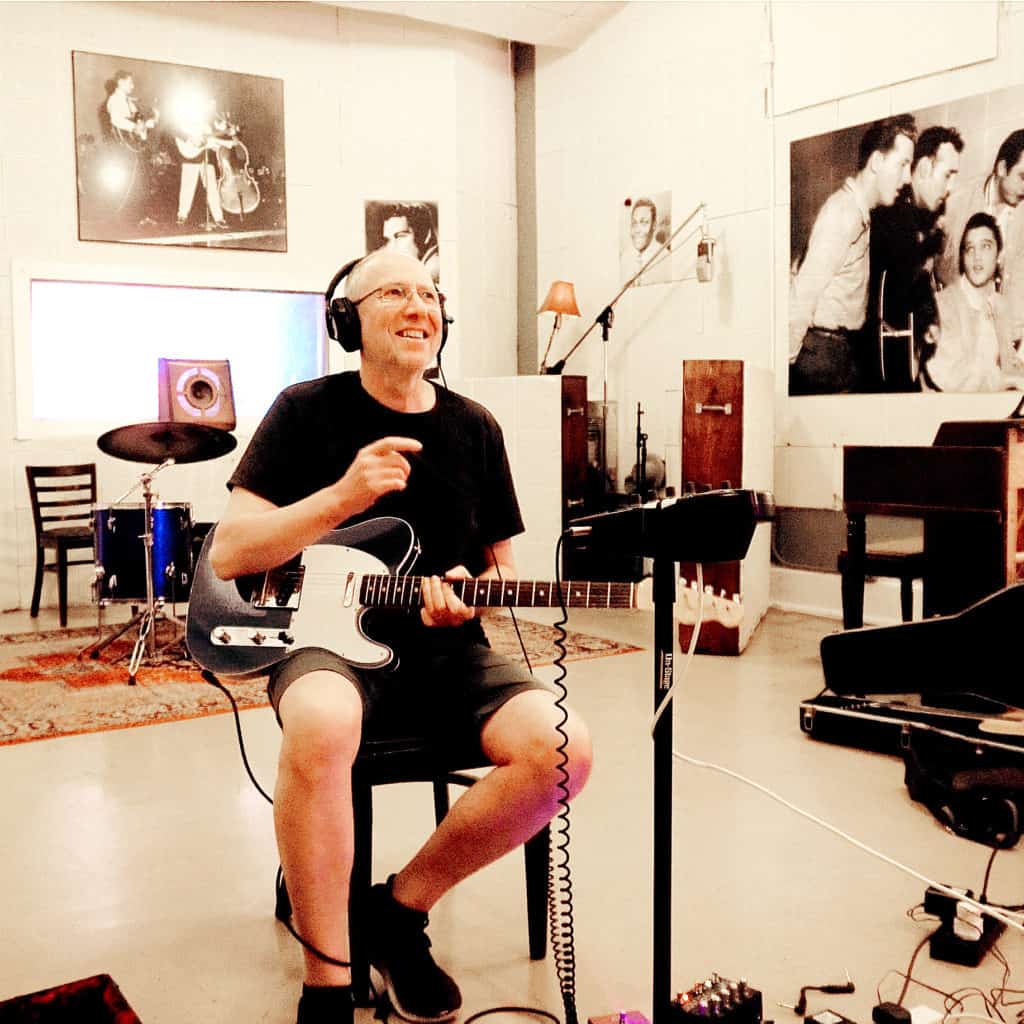
I notice on your Instagram feed there’s a photo of the gravestone of Elvis’s guitar player, Scotty Moore…
For my 60th birthday last year Georgina and I did a road trip through Mississippi, Tennessee and Alabama. We found Scotty’s resting place on July the 5th …65 years to the day since they recorded ‘That’s Alright Mama’ during their very first session at Sun Studios. That night I did a session at Sun.
Did you?!
Yeah, cos it still operates as a studio. During the day they had tourists going through and at night you can record there. I did two songs ‘Jane’ and ‘John’. It was amazing to record there, I did a six hour session, and it was just Georgina and I and the engineer. He was great, he just let us wander around, and gave me a whole lot of free stuff including an original Jerry Lee Lewis Sun single, a cover of ‘Cold Cold Heart’.
It happened by coincidence. Before that trip I had read Scotty Moore’s biography and when I saw the date they recorded ‘That’s Alright Mama’ I thought, I’ll book a session for the same day. I love Scotty Moore’s guitar playing and it was a real treat to go there.
We also went to the RCA studio in Nashville where Elvis did a heap of stuff and David Bowie mixed ‘Gene Genie’ there, and I found the studio where Blonde on Blonde was recorded and found Ardent Studio in Memphis where Big Star recorded, and went down to Muscle Shoals to a couple of studios where a lot of early Soul was done. I’m a fan, I like all that stuff.
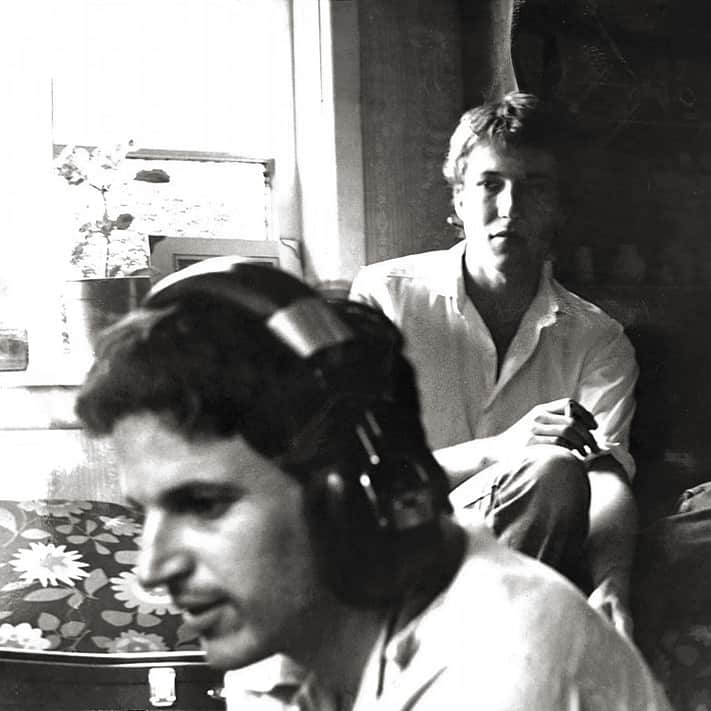
When you started recording the first Tall Dwarfs EP on the TEAC four-track Chris Knox said he had a grin from ear to ear…the realisation that you could record your own music…
Yeah, it was a revelation, our only experience with Toy Love had been recording in studios at the mercy of other people because we didn’t understand the equipment. The four track just sounded really good. It was spontaneous. ‘Nothing’s Going to Happen’ had been something we’d come up with when Toy Love were in Australia, we’d done it at sound checks but it hadn’t really evolved into anything, and the two other songs Chris wrote.
In later years most of the Tall Dwarfs stuff was just making something up on the spot, recording it, layering stuff up. It would evolve, it was a really good way to make music. Because we didn’t have a drummer we could make our own rhythm loops. On Canned Music was the first time we started using them, and I just loved the repetition and how it never wavers. We had to find creative ways to make the loops. On ‘Turning Brown and Torn in Two’ the rhythm is just Chris making a sound into a mic then slowing the tape right down. I remember you could get a nice thud if you hit a sofa or something. We’d be recording in a bedroom or a lounge or whatever and just use what was at hand. We’d rejected that idea of commercial success so it didn’t matter what we sounded like, we weren’t trying to cater to a mass audience, it was very niche. It was just Chris and I hanging out and doing what we liked doing. Luckily for us Flying Nun were very supportive and let us do what we wanted. We just handed it over and they put it out. At that time there was no recognition of FN outside of NZ so there was no expectation, we thought a few hundred people might hear it.
That first EP was such an influential one, and set many musicians who would make records for Flying Nun on the path of making their own music…
I guess it showed a different way of doing things, a more accessible way of doing things. It was a very different time. If you go back to 1980 you couldn’t make a record unless you got signed by a label who financed it. Independent labels were just starting.
I remember listening to your first solo album Gold Lame (1994) and thinking how it gave fans of your work an insight into your contribution to the Tall Dwarfs…in that you could hear your musical style and voice in isolation…
I got a four track cassette deck, it was pretty basic, and I had a casio keyboard, a 12-string acoustic and an electric guitar and recorded in a corner in the garage. It was very much like early Tall Dwarfs. I really enjoyed making it and it forced me to write songs which I’ve always found hard. People don’t know the second album Indifferent Velvet Void so well which is a shame because I’m really proud of it, the songwriting is better, and I used ProTools so I could layer it up more.
I’ve just been through the process of remastering it, and I still like it. Those two albums and Phantom Dots have been remastered for vinyl and I’m hoping they’ll be released. I’ve had interest from 3 labels in the States. I would love to have them on vinyl. Now that I’ve done my solo stuff I want to get Tall Dwarfs stuff re-issued. For a long time I was feeling like it was a bit of burden, y’know musical history. It’s only a notion at the moment so I’m not sure how that’s going to pan out.
